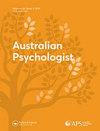The Greek Australian neuropsychological normative study: tests & norms for Greek Australians aged 70-85 years
IF 2
4区 心理学
Q2 PSYCHOLOGY, MULTIDISCIPLINARY
引用次数: 1
Abstract
ABSTRACT Objective Access to valid and reliable neuropsychological measures for use with culturally diverse groups in Australia is limited. The aim of this study was to adapt and translate a selection of English language neuropsychological tests, employ several existing standardised Greek language tests, and provide specific reference group normative data for Greek Australian older adults. Method A convenience sample of 90 healthy older Greek Australians (M = 77.14 ± 4.46; range = 70–85), with a primary school level of education (M = 5.60 ± 0.68; Range = 4–6), was recruited throughout the Melbourne metropolitan area. Several neuropsychological measures were administered which assessed domains such as verbal and visual memory, confrontational naming, and executive functions. Results Regression modelling revealed that age, education and sex predicted between 5% and 35% of the variance of test scores, with age being the most significant predictor of performance across a majority of measures. Therefore, the normative data for all tests were stratified according to three age bands (70–74, 75–79, 80–85). Conclusions The use of culture-specific tests and norms for assessment of older Greek-Australians with limited education may facilitate accuracy of assessment findings, improve diagnostic outcomes, and reduce misclassification. KEY POINTS What is already known about this topic: The use of English language tests with migrant populations and tests developed in nations of origin can lead to misclassification when applied to long-term immigrant peers. The use of test content derived from English language tests has been found to be inappropriate for use with culturally diverse groups. Access to norms and tests for assessment of culturally diverse groups in Australia are limited. What this topic adds: This paper provides a template for translating and adapting existing English language tests for use with culturally diverse groups. This is the first study to provide a set of comprehensive norms for Greek Australian older adults. Utilising culturally appropriate and specific reference group norms for Greek-Australians may improve the accuracy of assessment findings and reduce misclassification.希腊澳大利亚人神经心理规范研究:70-85岁希腊澳大利亚人的测试和规范
【摘要】目的在澳大利亚,有效可靠的神经心理学测量方法在不同文化群体中的应用是有限的。本研究的目的是改编和翻译精选的英语神经心理测试,采用几种现有的标准化希腊语测试,并为希腊裔澳大利亚老年人提供特定的参照组规范数据。方法方便抽样90例健康老年希腊裔澳大利亚人(M = 77.14±4.46;范围= 70-85),受教育程度为小学(M = 5.60±0.68;范围= 4-6),在整个墨尔本大都市区招募。研究人员使用了几种神经心理学测量方法来评估语言和视觉记忆、对抗性命名和执行功能等领域。结果回归模型显示,年龄、教育程度和性别可以预测5%到35%的考试成绩差异,其中年龄是大多数测试中最重要的预测因素。因此,所有测试的规范数据按三个年龄组(70-74岁、75-79岁、80-85岁)进行分层。结论:使用文化特异性测试和标准对受教育程度有限的老年希腊裔澳大利亚人进行评估,可以提高评估结果的准确性,改善诊断结果,减少错误分类。关于本主题的已知情况:在移民人口中使用英语语言测试和在原籍国开发的测试,在应用于长期移民同龄人时可能导致错误分类。使用源自英语语言测试的测试内容已被发现不适用于文化多样化的群体。在澳大利亚,利用评估多元文化群体的规范和测试的机会有限。本主题补充:本文为翻译和调整现有的英语语言测试提供了一个模板,以适应不同文化群体的使用。这是第一个为希腊裔澳大利亚老年人提供一套全面规范的研究。利用文化上适当和具体的参照群体规范希腊-澳大利亚人可以提高评估结果的准确性,减少错误分类。
本文章由计算机程序翻译,如有差异,请以英文原文为准。
求助全文
约1分钟内获得全文
求助全文
来源期刊

Australian Psychologist
PSYCHOLOGY, MULTIDISCIPLINARY-
CiteScore
3.70
自引率
5.30%
发文量
32
期刊介绍:
The Australian Psychologist is the official applied practice and public policy journal of the Australian Psychological Society. As such, the journal solicits articles covering current issues in psychology, the science and practice of psychology, and psychology"s contribution to public policy, with particular emphasis on the Australian context. Periodically, Australian Psychological Society documents, including but not limited to, position papers, reports of the Society, ethics information, surveys of the membership, announcements, and selected award addresses may appear in the journal.
 求助内容:
求助内容: 应助结果提醒方式:
应助结果提醒方式:


